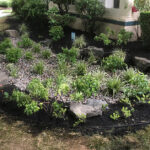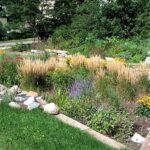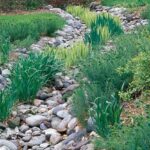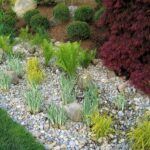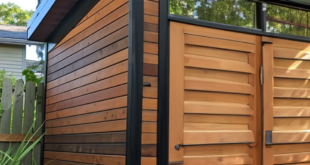Rain gardens are a beautiful and environmentally-friendly landscaping feature that can help manage stormwater runoff. Their design is crucial in ensuring that they effectively capture and filter rainwater while also adding aesthetic value to a property.
When designing a rain garden, it is important to consider the location and size of the garden. Ideally, a rain garden should be placed in a low-lying area where water naturally flows or collects during a storm. The size of the rain garden will depend on the amount of water that needs to be managed, typically ranging from 100 to 300 square feet for residential properties.
In terms of shape, rain gardens are typically designed as shallow depressions with gently sloping sides. These contours help slow down the flow of water, allowing it to infiltrate into the ground and be absorbed by the plants in the garden. The depth of a rain garden is usually between 6 to 12 inches, with the bottom being level to ensure even distribution of water.
Another important aspect of rain garden design is the selection of appropriate plants. Native plants are preferred for rain gardens as they are well-adapted to the local climate and soil conditions. Deep-rooted plants are also ideal as they can help improve infiltration and water absorption, as well as provide habitat for pollinators and other wildlife.
To enhance the functionality of a rain garden, it is recommended to include a berm or swale along the edge of the garden to help direct water flow into the garden. A layer of mulch can also be added to help retain moisture and reduce erosion. Additionally, adding a layer of gravel or rocks at the bottom of the rain garden can help improve drainage and filtration.
Overall, rain garden design requires careful consideration of various factors such as location, size, shape, plant selection, and additional features. By incorporating these elements into the design, homeowners can create a sustainable and visually appealing rain garden that effectively manages stormwater runoff and contributes to a healthier environment.

